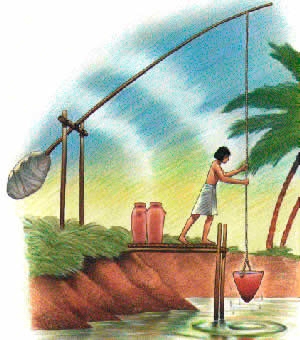A recent review of how irrigation has been used world round has recently been published. It's worth a read to learn how it hs been done and what we might learn for the presnet and the future. Daniele Zaccaria a UC Irrigation Specialist is one of the authors

Irrigation of World Agricultural Lands: Evolution through the Millennia
By: Andreas N. Angelakιs, Daniele Zaccaria, Jens Krasilnikoff, Miquel Salgot, Mohamed Bazza, Paolo Roccaro, Βlanca Jimenez, Arun Kumar, Wang Yinghua, Alper Baba, Jessica Anne Harrison, Andrea Garduno-Jimenezand Elias Fereres
(This article belongs to the Special Issue Water Supply and Water Scarcity)
Water 2020, 12(5), 1285; https://doi.org/10.3390/w12051285
Abstract
Many agricultural production areas worldwide are characterized by high variability of water supply conditions, or simply lack of water, creating a dependence on irrigation since Neolithic times. The aim of this paper is to provide an overview of the evolution of irrigation of agricultural lands worldwide, based on bibliographical research focusing on ancient water management techniques and ingenious irrigation practices and their associated land management practices. In ancient Egypt, regular flooding by the Nile River meant that early agriculture probably consisted of planting seeds in soils that had been recently covered and fertilized with floodwater and silt deposits. On the other hand, in arid and semi-arid regions farmers made use of perennial springs and seasonal runoff under circumstances altogether different from the river civilizations of Mesopotamia, Egypt, India, and early dynasties in China. We review irrigation practices in all major irrigation regions through the centuries. Emphasis is given to the Bronze Age civilizations (Minoans, Egyptians, and Indus valley), pre-Columbian, civilizations from the historic times (e.g., Chinese, Hellenic, and Roman), late-Columbians (e.g., Aztecs and Incas) and Byzantines, as well as to Ottomans and Arabs. The implications and impacts of irrigation techniques on modern management of water resources, as well as on irrigated agriculture, are also considered and discussed. Finally, some current major agricultural water management challenges are outlined, concluding that ancient practices could be adapted to cope with present challenges in irrigated agriculture for increasing productivity and sustainability.
There's also some added discussion of drainage in this review paper
The Evolution of Agricultural Drainage
from the Earliest Times to the Present
Sustainability 2020, 12(1), 416; https://www.mdpi.com/2071-1050/12/1/416/htm
Image: Egyptian Shaduf (from: Water Encyclopedia)
